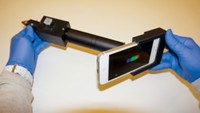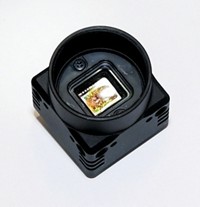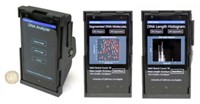Advertisement
Grab your lab coat. Let's get started
Welcome!
Welcome!
Create an account below to get 6 C&EN articles per month, receive newsletters and more - all free.
It seems this is your first time logging in online. Please enter the following information to continue.
As an ACS member you automatically get access to this site. All we need is few more details to create your reading experience.
Not you? Sign in with a different account.
Not you? Sign in with a different account.
ERROR 1
ERROR 1
ERROR 2
ERROR 2
ERROR 2
ERROR 2
ERROR 2
Password and Confirm password must match.
If you have an ACS member number, please enter it here so we can link this account to your membership. (optional)
ERROR 2
ACS values your privacy. By submitting your information, you are gaining access to C&EN and subscribing to our weekly newsletter. We use the information you provide to make your reading experience better, and we will never sell your data to third party members.
Analytical Chemistry
Smartphone Snaps Nanoparticle Pics
A lightweight attachment converts a cell phone’s camera into a mini handheld fluorescence microscope
by Journal News and Community
September 30, 2013
| A version of this story appeared in
Volume 91, Issue 39
By attaching a small, inexpensive gadget to the back of a smartphone, scientists have created a sensitive handheld fluorescence microscope. The attachment allows the phone’s camera to take pictures of fluorescently labeled nanoparticles and virus particles, making the phone a potentially useful portable diagnostic tool for health care workers in developing countries (ACS Nano 2013, DOI: 10.1021/nn4037706). The device, designed by Aydogan Ozcan of UCLA and colleagues, consists of a laser diode to excite fluorescent dyes and a compact system of lenses and filters that remove background noise created by the laser light. The team used the microscope to detect human cytomegalovirus particles, which are between 150 and 300 nm in diameter, and polystyrene beads, which at about 100 nm in diameter were the smallest objects that could be detected. According to Ozcan, the mini microscope is the first portable, cell-phone-based imaging system sensitive enough to resolve individual nanoparticles and viruses. Ozcan started a company called Holomic to commercialize the device, and his group has created smartphone apps for data analysis.





Join the conversation
Contact the reporter
Submit a Letter to the Editor for publication
Engage with us on Twitter